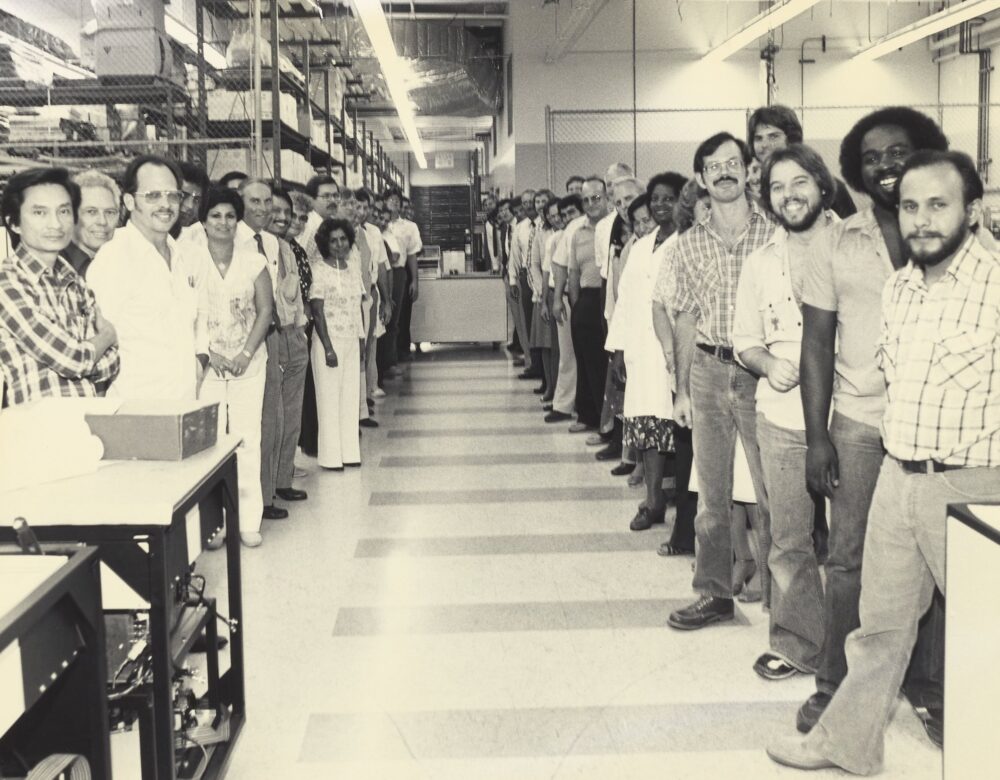In Season 11 of the medical drama Grey’s Anatomy, the talented but troubled physician Amelia Shepherd performs the impossible when she excises a lethal tumor from a fellow doctor’s brain. Saving her colleague establishes Shepherd as a truly gifted surgeon, one who can single-handedly pull her patients back from the brink. From Shepherd’s heroics to the solo tinkering of The Big Bang Theory’s characters, scientists are repeatedly portrayed in the media as lone geniuses. In these popular depictions they are social outsiders, disconnected from functioning networks of family and community—completely and utterly independent. While this may make for good storytelling, it gives people a false understanding of how science really works. Successful scientific research requires the work and support of friends, family, and fellow professionals, efforts that often go unrecognized and unpaid. The necessity of such support networks is particularly true for scientists with disabilities.
Take the life and work of Bradley S. Duerstock, the founder and director of the Duerstock Institute for Accessible Science at Purdue University in Lafayette, Indiana. In 1989, when Duerstock was about to enter West Point Military Academy, a diving accident that led to quadriplegia forced him to reconsider his plans. He went to Purdue, a public university, thanks in part to the passage of the Vocational Rehabilitation Act (1973) and the Americans with Disabilities Act (1990).
Section 504 of the 1973 Rehabilitation Act was the first civil-rights legislation to focus on disability. It required publicly funded institutions to provide reasonable accommodations for students with disabilities, such as wheelchair-accessible dorms and bathrooms. Seventeen years later the ADA regulations expanded to prohibit discrimination in employment, public services, and accommodations on the basis of disability. Even after the passage of the ADA, however, accommodations for college students with disabilities have remained spotty. When Duerstock got to Purdue, he found that curb cuts, the now-ubiquitous ramps built into sidewalk curbs, were still few and far between. Duerstock’s older brother lived with him, providing caretaking assistance throughout his undergraduate years. His parents also lived close by, offering frequent help and support. “The family support [is] invaluable . . . doing these little bitty things,” he said in an interview with Science History Institute staff in September 2017. “I had a wheelchair-accessible vehicle, but things break down. Getting it fixed involved traveling to Indianapolis, which [is] an hour away.”
At graduate school Duerstock learned how to hire and manage his own paid personal-care attendant, though his brother remained nearby. “It was a big deal to get a personal-care attendant. You know, this is a stranger that [you’re] asking to do everything from go into the bathroom, to getting dressed, bathing, overnight. You need assistance to turn. This was a big transition. I found an individual, Mark, and he has been with me as an attendant [for] over twenty years.” (Duerstock received his PhD in neuroscience from Purdue in 1999.)
Like all research scientists, Duerstock requires support to do his work. He relies on a team of postdocs and graduate students who contribute to his overall research agenda and output; they may also help get him a soda from the vending machine. Duerstock credits much of what he has accomplished in his career to his partnership with his wife, Sally Irvin (who sadly passed away in January 2018). “My wife has been invaluable for helping me, putting up my reference lists—some things it just takes me a long time to put together. My bibliography for a paper, she would do. She’s a very intelligent woman, and she can help with the family things, so I can focus on [my] career. . . . It’d be very tough for someone in my position to be where I’m at now [without that kind of support].”
The network of people in Duerstock’s life have been more important to his success than any fancy gadget or adaptive technology. His family gave him the time and the physical and emotional care required to heal from his injury and to learn how to be successful in his changed body. Purdue University provided an environment in which Duerstock felt comfortable, safe, and generally supported, and gave him the training and economic stability he has needed to thrive. His partnership with his wife enriched his life, while also providing supportive, caring, unremunerated labor that helped him advance his career.
In pointing out these “supports” I do not mean to differentiate Duerstock’s scientific success from that of any other research scientist. Duerstock’s story helps bring into focus the extent to which all scientific work leans heavily on these often invisible networks of support and caregiving. Whether in the lab, in the home, or both, this additional labor is necessary for creating the conditions in which scientific work can flourish. This phenomenon has received more attention in recent years, aided by #ThanksForTyping, which helped call attention to the nearly ubiquitous presence of wives-as-typists in the acknowledgment section of scholarly books. The life narratives of scientists with disabilities suggest that spouses are not the only people who provide support. These scientists also rely on parents, siblings, family friends, paid staff, students, and mentors.
We must do a better job of acknowledging these networks of assistants, students, family members, and other kinds of helpers that all scientists rely on. Understanding that these needs are universal will make science more welcoming to people with disabilities.
And such an acknowledgment encourages us to question the arbitrary boundary between what we see as an “accommodation” for someone with a disability (such as the personal-care attendant who assisted Duerstock in graduate school) and what we see as a “privilege” awarded to academics regardless of physical ability (such as Duerstock’s grad students who help him conduct his research). Acknowledging these efforts helps us see that scientific work is made possible by many people who are not scientists in the traditional sense. This diverse and expansive pool of scientific workers—caregiving laborers—has long played a crucial role in the creation of scientific knowledge.




